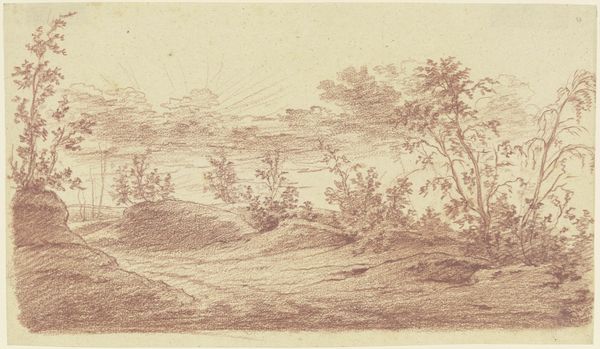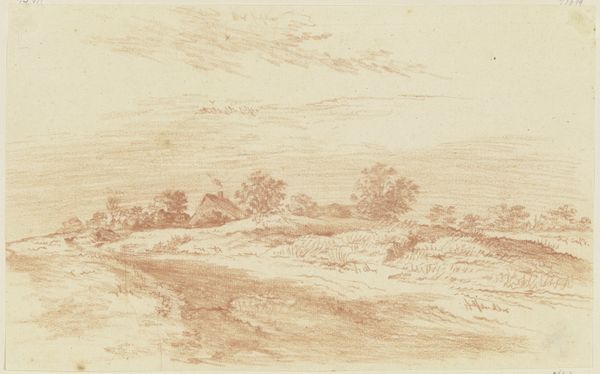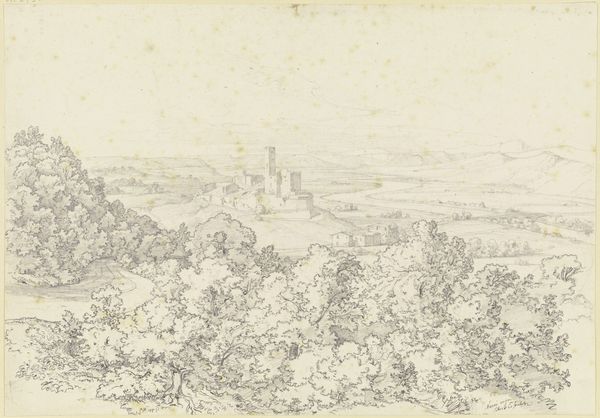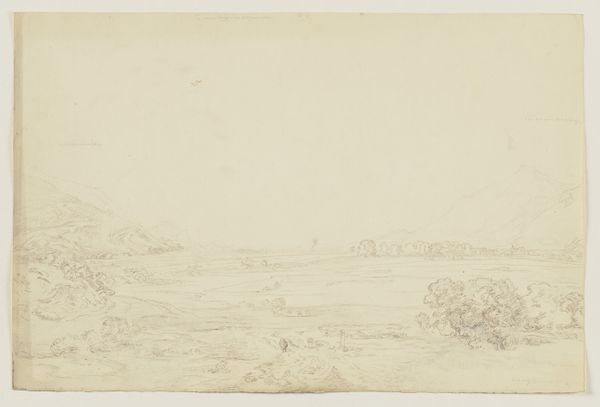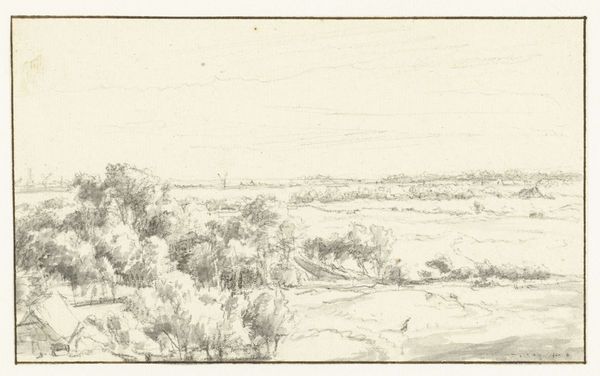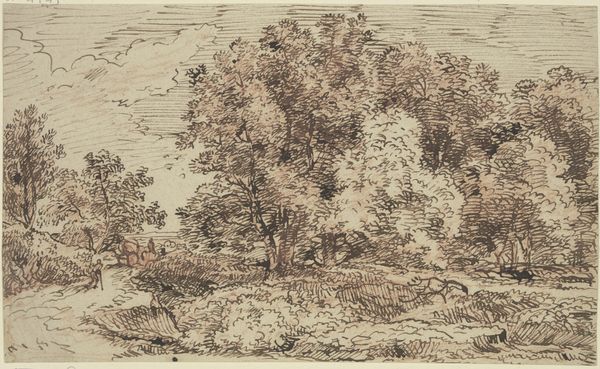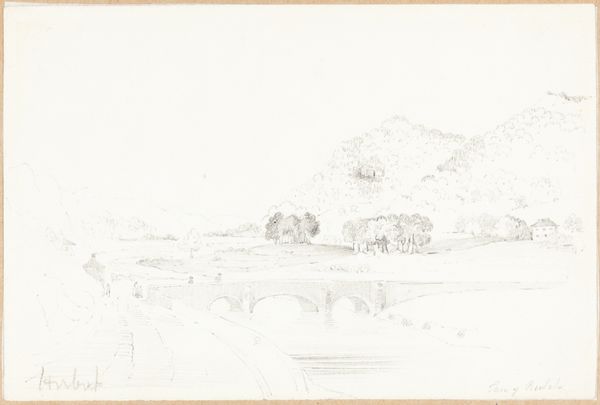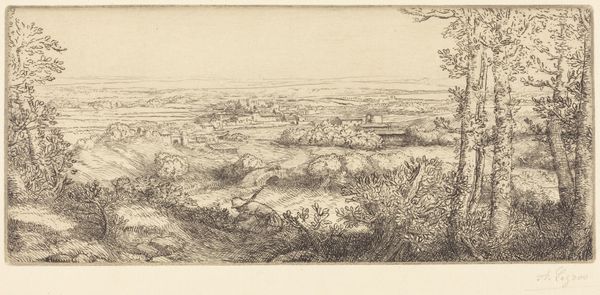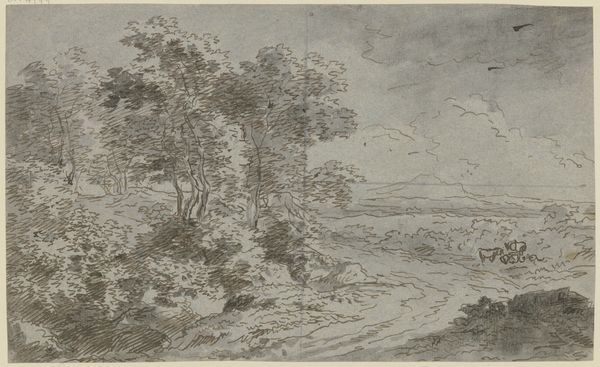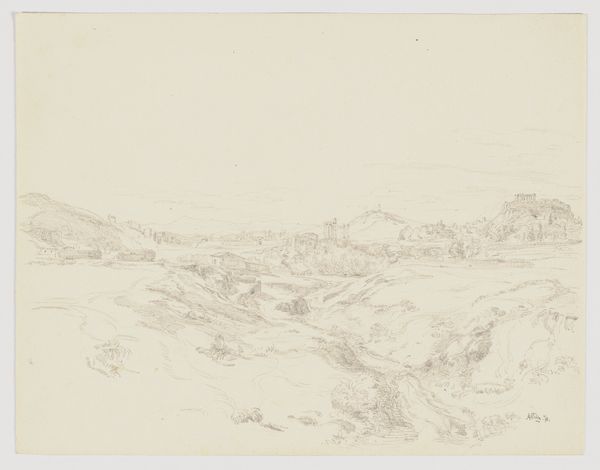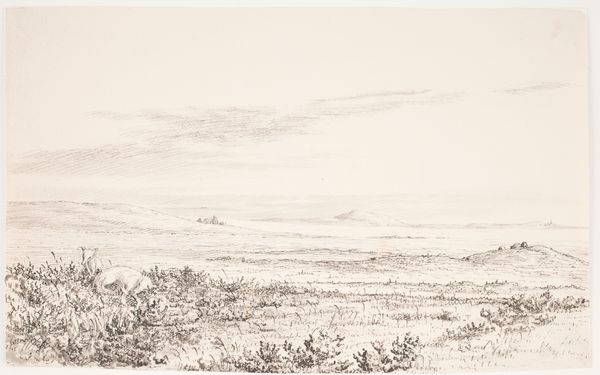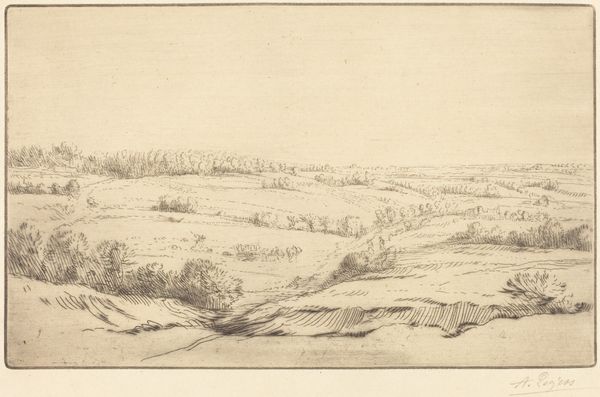
Waldpartie aus dem Taunus mit dem Försterhaus bei Oberursel
0:00
0:00
drawing, tempera, red-chalk, pencil
#
drawing
#
tempera
#
red-chalk
#
pencil sketch
#
landscape
#
etching
#
pencil
Copyright: Public Domain
Editor: This is *Waldpartie aus dem Taunus mit dem Försterhaus bei Oberursel* by Friedrich Wilhelm Hirt. It's a drawing with tempera, red-chalk, and pencil, located at the Städel Museum. The hazy, monochromatic texture really lends a dreamlike quality to the landscape. What captures your attention most about this piece? Curator: I see the exploitation of the Taunus landscape. Hirt's choice of readily available and affordable materials like pencil and red chalk speaks to the democratization of art-making and its accessibility within a growing urban middle class, hungry for depictions of leisure outside of industrial spaces. Note the efficient etching technique, replicating images to meet demand. How does the limited palette influence your perception? Editor: It definitely feels grounded and connected to the earth. The lack of vibrant colors makes me think about the cost and availability of pigments. Do you think Hirt consciously considered those limitations while creating the drawing? Curator: Undoubtedly. He understands his audience and market. The scale suggests domestic consumption, art for the burgeoning urban household. Even the visible pencil sketch lines acknowledge the labor, rejecting notions of effortless artistic genius, aligning more closely with craft production and challenging conventional artistic hierarchy. Editor: That makes a lot of sense. Seeing it in terms of production and consumption changes the way I interpret the work's intimacy. Curator: Exactly. It prompts us to reconsider traditional notions of artistry by emphasizing how the creation process can be affected by labor value, accessible media, and also societal context. This really encourages thinking about accessibility in artistic representation. Editor: I never thought of landscape drawing in that way before. Now, it is clear that landscapes weren't simply reflections of nature but deeply intertwined with socio-economic factors. Thank you for this eye-opening discussion! Curator: A valuable exercise! Examining material choices exposes so much about its context and shifts our perspective of this historical piece.
Comments
No comments
Be the first to comment and join the conversation on the ultimate creative platform.
